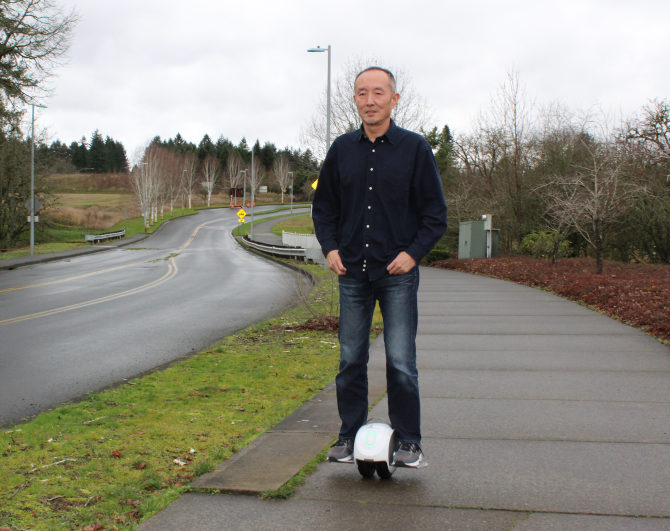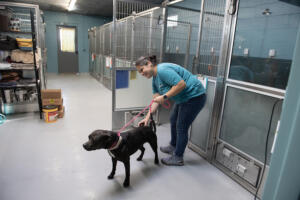Inventor Shane Chen is floating down the sidewalk outside his Inventist office in the Camas Meadows Corporate Center, his latest creation — the IOTAtrax, an electric-powered, kettlebell-shaped riding device billed as a creative and practical solution to commuters’ “last mile” problem — tucked between his feet.
He zips past a jogger before turning around and flying back toward his starting point. Leaning back, Chen comes to a sudden, but still smooth, halt and hops off the self-balancing IOTAtrax.





